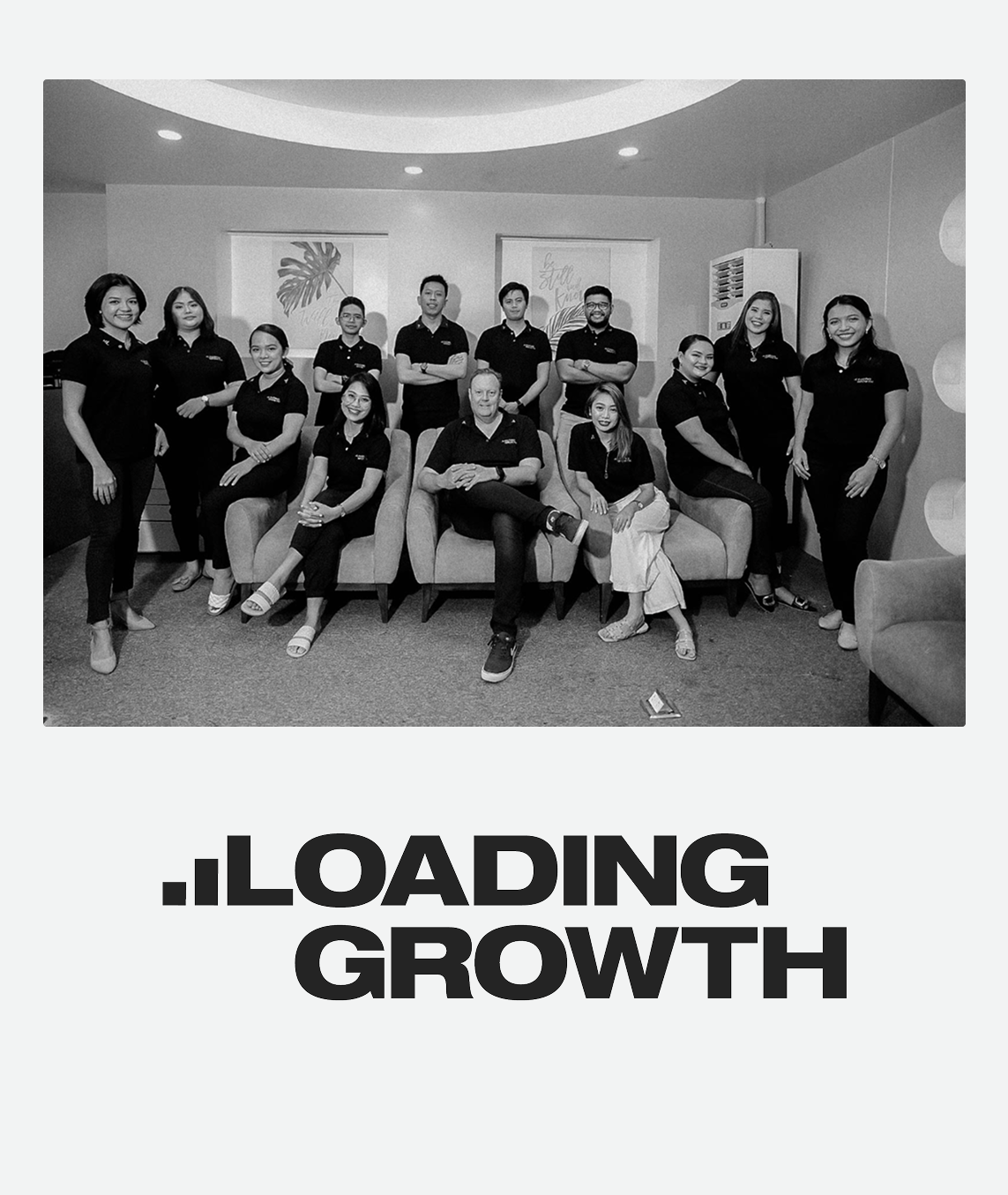"
"I have had the privilege of working with Ian Markram at Loading Growth, and I cannot express enough how much he has impacted our business. Ian is a true professional and an exceptional business coach. He has helped us to understand the importance of clarity and focus in our business and how to align our goals with our values."
DANIEL JEWELL
DIRECTOR AND PRACTICE LEAD, CHROME CONSULTING
"
"Ian has coached our executive team for the past 18 months and has helped us transition from our roles as technical leads within the business to acting as business owners to focus on growth. This has helped us to exceed our growth and profitability targets."
ATHOL HILL
DIRECTOR AND CO-FOUNDER, CHROME CONSULTING
"
"Ian's passion for and focus on improving the operating models and growth engines of IT Services businesses is unquestionable. He & his team help drive continuous improvements in my business in practical steps of a manageable size. His advice has been invaluable in helping me mature as a business leader and putting in place the support needed to drive the growth of Talos."
JAMES BEREFORD
CEO, TALOS
"
"Ian's work ethic was outstanding, and he is an expert at assisting our company in thriving and reaching its full potential. I highly recommend him for his mentorship and leadership abilities. I'll never forget meeting Ian and Loading Growth since it profoundly impacted my company and me."
MIKE RYAN
MANAGING DIRECTOR, CASHEL GROUP CONSULTING
"
"It was great working with Ian. He is an intelligent person who has a solution to every problem and deals with them professionally. His expertise was evident given the results and tractions we are getting through their Lead Generation campaign the past 6-9 months. I look forward to more engagement and growth as we continue to work. I would highly recommend Ian."
TONY GRAY
PRACTICE MANAGER, MOJOSOUP
"
"Our decision to utilise Ian and the Loading Growth team to focus our business has been instrumental for us over the last 6-9 months. Ian is professional, courteous, intelligent and a highly talented person with experience that is deep and broad. He helped us grow our business by looking for the right clients, shifting our mindset and focusing on the right things. He is a great person to work with, and I will recommend him to anyone starting or wanting to grow their IT business."
BENJAMIN CHAMBERS
COO , MOJOSOUP
"
"Ian has been in the IT industry for so long. He already mastered its ins and outs in every business. If you are searching for someone who can help you grow your business, Ian is the best IT professional you should talk to. He is knowledgeable. He can relate to people at all levels - start-ups to the big ones. His LinkedIn lead generation campaign provides insights into the importance of having an optimised profile. He also imparted me essential strategies to grow my network in LinkedIn, attract potential customers, and nurture them."
PAUL EP
SALES MANAGER, MYTECH CONSULTING
"
"Ian made an impact on helping myself and the team achieve our targets most especially in the LinkedIn strategy area. He is innovative and visionary. He has a strong positive mindset and is good at making strategies for growth. If you want to improve your results from LinkedIn, Ian is the best person to tap when it comes to IT industry."
NICK JAYARAJAN
DIRECTOR INTERFUSE TECHNOLOGIES
"
"Ian's work ethic was outstanding, and he is an expert at assisting our company in thriving and reaching its full potential. I highly recommend him for his mentorship and leadership abilities. I'll never forget meeting Ian and Loading Growth since it profoundly impacted my company and me."
MIKE RYAN
MANAGING DIRECTOR, CASHEL GROUP CONSULTING
"
"I have had the privilege of working with Ian Markram at Loading Growth, and I cannot express enough how much he has impacted our business. Ian is a true professional and an exceptional business coach. He has helped us to understand the importance of clarity and focus in our business and how to align our goals with our values."
DANIEL JEWELL
DIRECTOR AND PRACTICE LEAD, CHROME CONSULTING
"
"Ian has coached our executive team for the past 18 months and has helped us transition from our roles as technical leads within the business to acting as business owners to focus on growth. This has helped us to exceed our growth and profitability targets."
ATHOL HILL
DIRECTOR AND CO-FOUNDER, CHROME CONSULTING
"
"Ian made an impact on helping myself and the team achieve our targets most especially in the LinkedIn strategy area. He is innovative and visionary. He has a strong positive mindset and is good at making strategies for growth. If you want to improve your results from LinkedIn, Ian is the best person to tap when it comes to IT industry."
NICK JAYARAJAN
DIRECTOR INTERFUSE TECHNOLOGIES
"
"Ian is courteous and builds long-lasting relationships with his clients. He is the type of person you can talk to about anything to do with your business. He is knowledgeable, and he won't hesitate to share what he knows with anyone who needs help. Ian is a great leader and a mentor! I would strongly recommend Ian."
JANE ROBERTSON
BUSINESS DEVELOPMENT MANAGER , TALOS
"
"Ian has lived and breathed analytics and data for 20+ years. There are very few people in Australia that could match his passion, knowledge and thought leadership in this space. Ian is a specialist at forging close and lasting relationships with his customers."
STUART CHAMBERS
STRATEGIC ACCOUNT DIRECTOR, CHROME CONSULTING
"
"Working with Ian was the turning point for our company. We finally have predictable growth and clear direction."
Carlos Mendez
Integrated Tech Solutions
"
"I really enjoyed Ian's session and learned a lot from his advice. He gave us some practical and realistic actions that can make a positive impact on our business performance. His insights have helped me clarify my goals and priorities for this financial year. I'm grateful for the chance to be part of the session and I'm excited to put the ideas into practice. Thanks for your time Ian!"
JARED BAGNALL
Insights and Analytics Practice Manager
"
"I wanted to take a moment to share my appreciation for Ian's strategy session during our meeting today. The insight and expertise he brought to the table was invaluable in helping us align our efforts and reinforce our strategy for the upcoming year. The use of the Strategy Software from Empiraa was particularly helpful in organising the information we had gathered and discussed. Ian's session was clear, concise and engaging, making it a highlight of our meeting. Thank you, Ian, for your contribution to our team's success. Have fun at the rugby Saturday, go the wallabies!"
"
"Partnering with this team has been one of the best decisions we've made for our business. Their expertise in the IT Professional Services sector is unparalleled, and they've provided us with the strategies and support we needed to drive real, measurable growth. Our revenue has increased significantly, and we've also established ourselves as a thought leader in our industry. The coaching we received was tailored to our specific needs, with a focus on maximizing client retention, boosting our rates, and ensuring long-term, sustainable success."
MATT FOULSHAM
Managing Director
"
"Collaborating with this team has been a standout decision for our business. Their unparalleled expertise in the IT Professional Services sector has provided us with the strategies and support we needed to achieve real, measurable growth. Our revenue has seen a significant boost, and we have firmly established ourselves as thought leaders in our industry."
TONY GRAY
Practice Manager
"
"Working with the Loading Growth team has been a game-changer for our company. Their in-depth understanding of the IT Professional Services landscape, coupled with their strategic insights, has propelled our business to new heights. Not only have we seen significant growth in revenue, but we've also strengthened our position as thought leaders in our space. Their coaching, tools, and frameworks are top-notch, tailored to address the unique challenges of IT services companies."
TONY CARTER
Principal Consultant
"
"Ian is courteous and builds long-lasting relationships with his clients. He is the type of person you can talk to about anything to do with your business. He is knowledgeable, and he won't hesitate to share what he knows with anyone who needs help. Ian is a great leader and a mentor! I would strongly recommend Ian."
JANE ROBERTSON
BUSINESS DEVELOPMENT MANAGER , TALOS
"
"Ian has lived and breathed analytics and data for 20+ years. There are very few people in Australia that could match his passion, knowledge and thought leadership in this space. Ian is a specialist at forging close and lasting relationships with his customers."
STUART CHAMBERS
STRATEGIC ACCOUNT DIRECTOR, CHROME CONSULTING
"
"I really enjoyed Ian's session and learned a lot from his advice. He gave us some practical and realistic actions that can make a positive impact on our business performance. His insights have helped me clarify my goals and priorities for this financial year. I'm grateful for the chance to be part of the session and I'm excited to put the ideas into practice. Thanks for your time Ian!"
JARED BAGNALL
Insights and Analytics Practice Manager
"
"I wanted to take a moment to share my appreciation for Ian's strategy session during our meeting today. The insight and expertise he brought to the table was invaluable in helping us align our efforts and reinforce our strategy for the upcoming year. The use of the Strategy Software from Empiraa was particularly helpful in organising the information we had gathered and discussed. Ian's session was clear, concise and engaging, making it a highlight of our meeting. Thank you, Ian, for your contribution to our team's success. Have fun at the rugby Saturday, go the wallabies!"





















